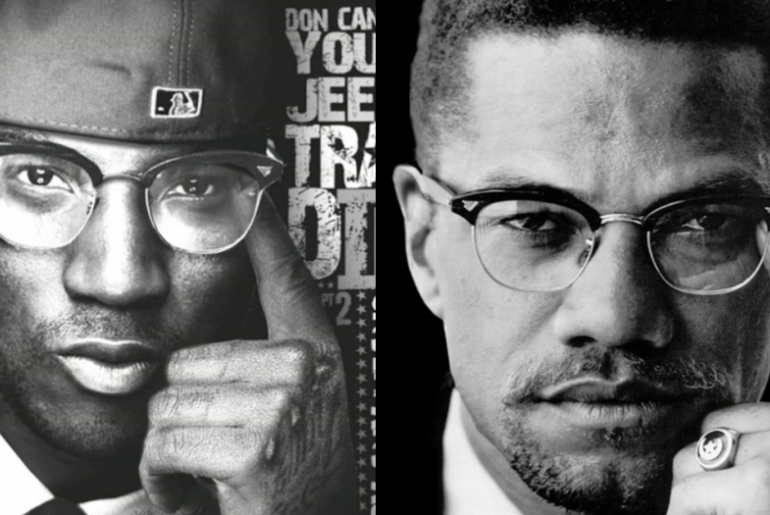There was a funny twitter beef a few weeks ago between Lord Jamar of Brand Nubian and comedian Marlon Wayans about emasculation or feminization in hip hop culture. What’s interesting about the debate to me is that what many are calling emasculation or feminization is really just another manifestation of something author Thomas Franks called the ‘commodification of dissent’.
There are political or social claims at the core of hip hop that many relate to. It’s in the voice of the outsider, the ignored, and the misunderstood. Tupac alluded to this in his reference to a ‘rose that grows through the concrete’, it will be beaten, battered, and not quite as pleasant to look at as others, but its struggle lends it a kind of transcendent beauty. So, in the minds of many, the uglier side of hip hop hid deeper and more urgent claims. To judge it solely on the language or the imagery was to miss the lessons that can only be learned through struggle and that can best be articulated by those who have experienced that struggle. The claims for inclusion, for access, for agency, to be heard, represent dissent.
It’s easy to understand why hip hop artists would want to align themselves with major corporations. They have the capital, distribution networks and expertise, but what do you do with the all of the dissent or arguments that, in theory, would be at odds with the interests of a corporation? You commodify it.
To commodify dissent you must first redefine dissent in the minds of the public. This can mean, like in the case of Apple and Gandhi, defining dissent as a kind of tone or attitude without any political implications. Or in the case of Dr. King and McDonald’s as a kind of transcendent optimism. Of course Gandhi’s challenge to Western hegemony had no place in the Think Different campaign and Dr. King’s support for organized labor be out of place in a McDonald’s campaign.
The dissent in hip hop is redefined in a slightly different way. Rather than being a challenge to authority or the existing order, dissent is redefined as merely a challenge – a kind of rolling, abstract challenge. So, the tone of anti-establishment defiance remains in the context of buying and selling clothes, cologne, or cognac. Rappers who call their labels ‘movements’ are channeling this commodified dissent in a way that Mc Hammer never did, which helps explain why he was labeled a sell-out, but others are not.
Another important step in the commodification of dissent is to remove criticism. So in the 1990s and 2000’s the sucka-mc who was part of the culture was replaced by the ‘playa hater’ or the ‘hater’ who was a threat to it. Rappers pitted themselves in a kind of existential struggle against ‘haters’. My favorite example being the ‘Hate Me Now’ video in which Nas and Puffy tear the club up then reenact Christ’s crucifixion. There are countless other examples, but what’s interesting is that the primary motive of the hater is usually not the discriminating against the rapper – which was the case in Ridin’ Dirty by Chamillionare. The hater’s main objective is to interfere with the rappers financial or sexual conquests. He wants to stop the party and potentially the consumption.
The final step in commodifying dissent is a process called ‘rapid introduction rapid obsolescence’ or RIRO. Most hip hop fans – and even detractors – will acknowledge that the music is endlessly inventive and innovative. RIRO attempts to both speed up this process and to accessorize it. So, being a fan means maintaining an intense awareness of the artists and a variety brands for a fixed period, then beginning the process anew with someone else. If an artists hopes to remain relevant he or she must also embrace reinvention and transformation – some will rename themselves repeatedly, others will engage in endless and ill conceived beefs, some will wear dresses, and a few will do all of the above.
Lost in all of this is the importance of real dissent. Commodification of dissent seeks to create a kind of ‘rebel consumer’ who challenges authority through buying certain brands that show his or her individuality. A young man was detained in Barneys a few months ago for being young, black and trying to buy a $300 dollar belt. The solution in the minds of many was for Jay Z to step in and force Barneys to revamp their racial profiling policy. That the company or the ‘powers that be’ is considered both the problem and the solution is the very opposite of dissent and tells how far we have drifted.


2 Comments
Love this and loved Commodify Your Dissent by Thomas Frank. I wish you had gong on another minute about why it’s important to preserve a space and distinction for real dissent. Obviously black dissent should be a continued force in a country built on slave labor. Looking forward to hearing your thoughts on the article on reparations in the Atlantic Monthly.
Thanks Loch. I’ve been thinking alot about the Ta-Nehisi Coates article. I think many have a knee-jerk reaction to reparations that colors the way they read his arguments, so the person who might argue that blacks need to pull themselves up by their boot-straps would have to acknowledge – assuming they agree with the facts of his article – that the government has been picking winners and losers for a long time with little opposition from the mainstream. If there had been strong opposition to red-lining by the FHA, GI Bill racial bias, and some of the other things Coates mentioned from the white mainstream at the time then we might be having a different conversation, but that would be the equivalent of telling the government to ‘take its hands off my medicare’: its biting the hand that feeds you. Obviously those policies were acceptable by the mainstream for a variety of reasons, but a policy to compensate for them is anathema.
In a nutshell, if the opposition agrees with the facts of the Coates article then they’d have to argue that its acceptable for the state to use racial bias to create or aggravate a disparity, but any attempt to resolve past racial bias must be racially neutral.